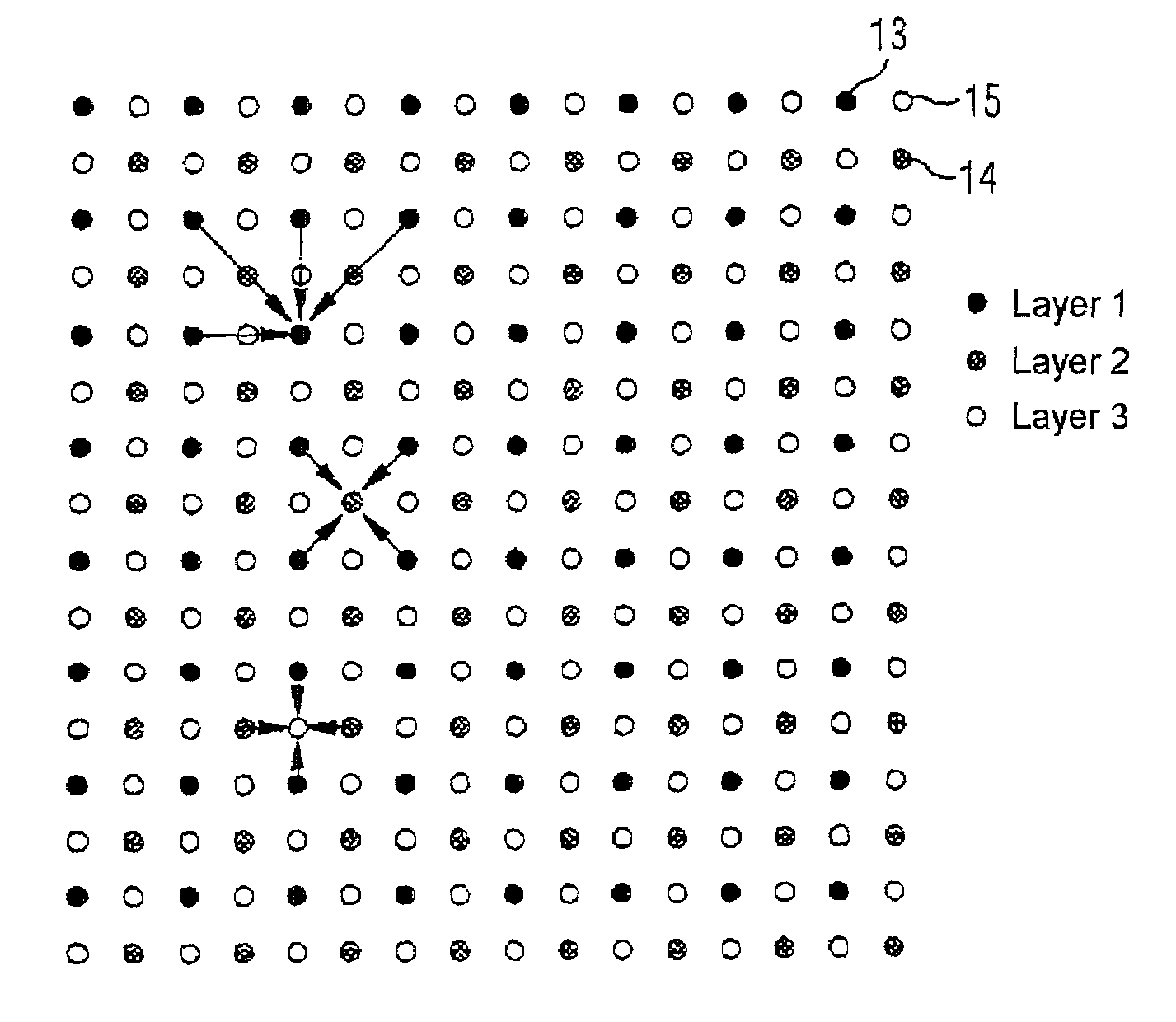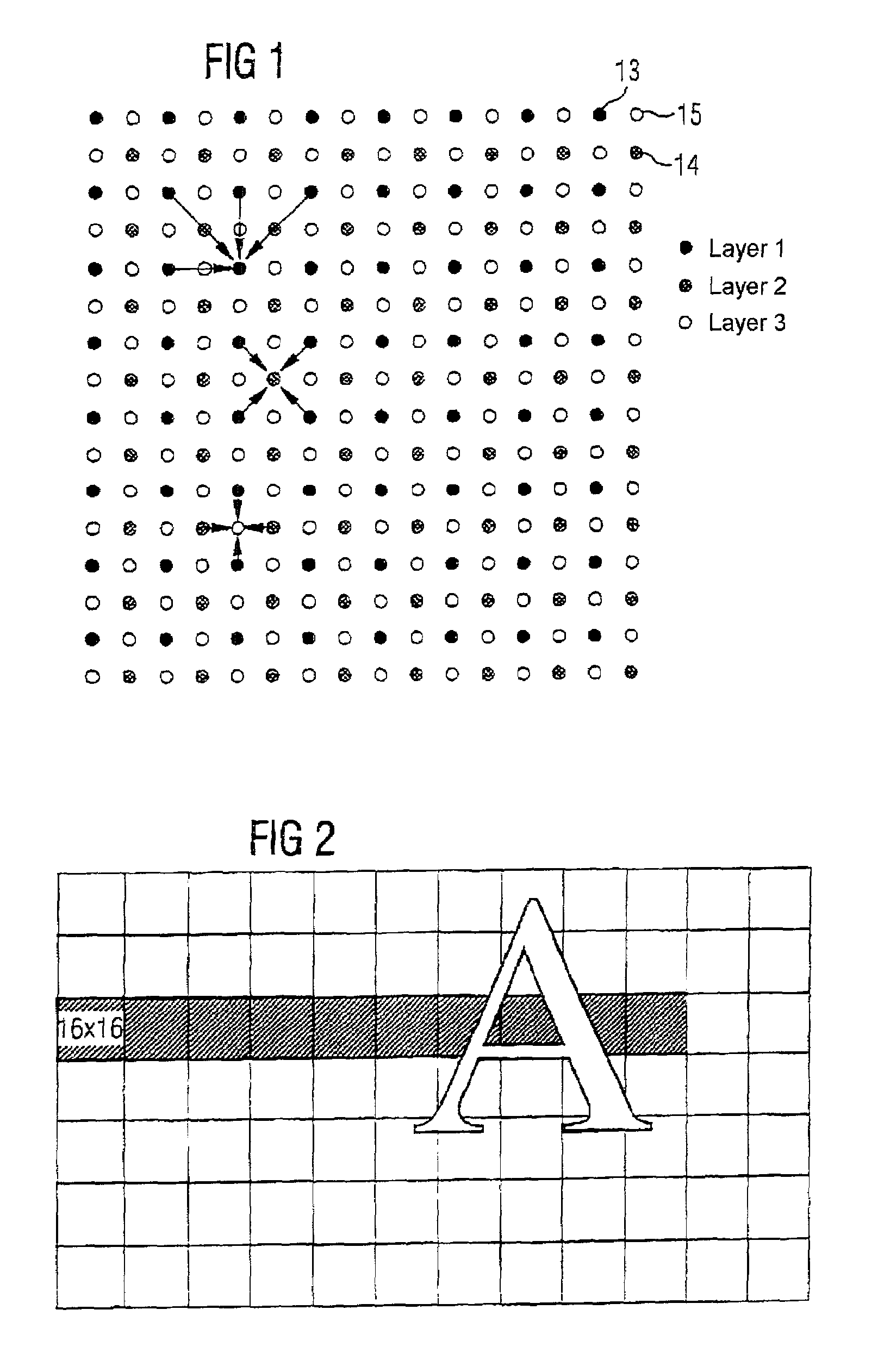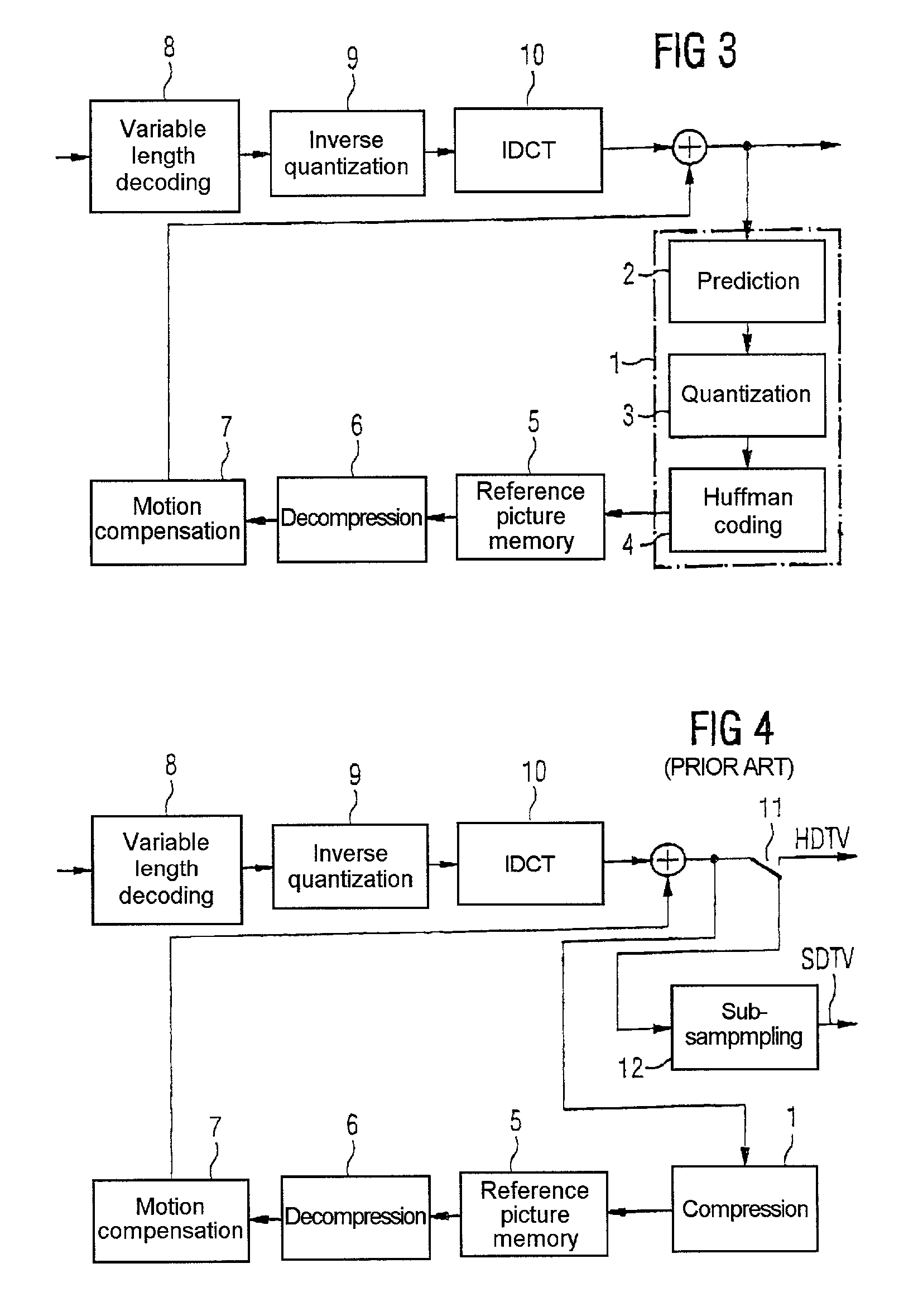Method and device for picture compression using a plurality of sampling patterns
a sampling pattern and pattern technology, applied in the field of picture compression, can solve the problems of reducing the data rate, requiring a quarter of the storage capacity, and the internal picture memory of a large format is a huge memory requirement, so as to reduce the data rate, avoid error propagation, and avoid error propagation
- Summary
- Abstract
- Description
- Claims
- Application Information
AI Technical Summary
Benefits of technology
Problems solved by technology
Method used
Image
Examples
Embodiment Construction
[0024]The invention employs a special compressing or coding method which compresses the picture to be compressed by a specific factor, for example by the factor 4, and, during decompression, allows any desired access to specific picture areas. The invention is explained below using the example of a video decoder with motion-compensated prediction, in particular using the example of a DCT hybrid decoder in accordance with the MPEG-2 standard, but the present invention can equally be applied to other predictive coding or decoding methods and compression factors and also other areas of application.
[0025]The compressing method of the present invention proposes subdividing the picture to be compressed into a plurality of areas, for example into blocks each having 16×16 pixels, which are compressed independently of one another in each case by the same factor, for example by the factor 4. The picture areas are subdivided into a plurality of layers which correspond to different sampling pat...
PUM
 Login to View More
Login to View More Abstract
Description
Claims
Application Information
 Login to View More
Login to View More - R&D
- Intellectual Property
- Life Sciences
- Materials
- Tech Scout
- Unparalleled Data Quality
- Higher Quality Content
- 60% Fewer Hallucinations
Browse by: Latest US Patents, China's latest patents, Technical Efficacy Thesaurus, Application Domain, Technology Topic, Popular Technical Reports.
© 2025 PatSnap. All rights reserved.Legal|Privacy policy|Modern Slavery Act Transparency Statement|Sitemap|About US| Contact US: help@patsnap.com



